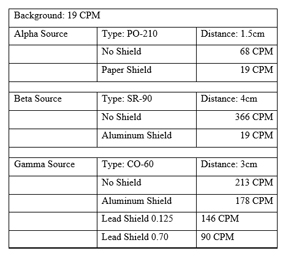Nuclear radiation is ionizing radiation. Ionizing radiation is radiation that can strip electrons from atoms and molecules. We classify this ionizing radiation into three major categories; gamma rays, beta and alpha particles.
Gamma (and x-rays) are ultrashort electromagnetic radiation. They have great penetrating power and can easily pass through the body and are attenuated by dense materials such as lead.
Beta particles are electrons. Beta particles have a net negative charge. They have low penetrating power. Most beta radiation can be blocked by 1/8” (4mm) of aluminum.
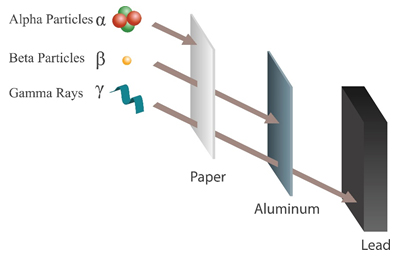
In this experiment, we will examine each type of radiation using a Geiger counter and verify it penetrating power using paper, aluminum and lead shields. License exempt radioactive isotope button sources are available for purchase. You will need an alpha, beta and gamma button sources.
To begin, take five or more background CPM measurements, and record the results.
Background 19 CPM
The first source we will use is the polonium-210 alpha particle source. The polonium-210 has a half-life of 138 days. After the source has been in storage for a year or so, it will become too weak to perform useful experiments. The alpha particle source will need to face the mica window of the gm tube inside the wand. It will need to be in close proximity to the mica window. I needed to move my source to a distance of only 1.5 cm away from the mica window of the GM tube to get a significant CPM reading above background.
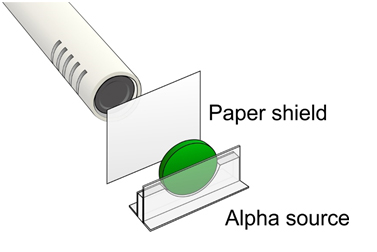
With no shield average CPM from alpha source is 68 CPM
Once you obtain a reading on the Geiger counter, place a piece of paper in-between the source and GM tube. Record your results.
Next use the Sr-90 beta source. I place this source 4 cm from the front of the GM tube.
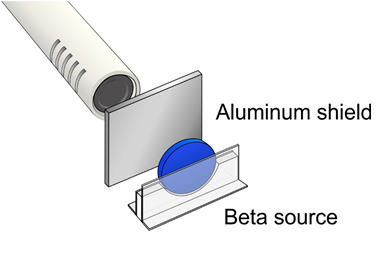
Take the readings as before and record your average CPM in chart. Next place the paper shield in front of the beta source. Record your results. Next place an aluminum shield of approximately 1/8” (4mm) thickness in-between the source and gm tube. Record your results.
Next use the Co-60 gamma source. I placed this source 3 cm from the front of the GM tube. Take CPM readings as before. Record your results. Next place an aluminum shield of approximately 1/8” (4mm) thickness in-between the source and gm tube. Record your results. Next place a lead shield of approximately 1/8” (4mm) thickness in-between the source and GM tube. Record your results. Next place a lead shield of approximately 1/2” (13mm) thickness in-between the source and GM tube. Record your results.
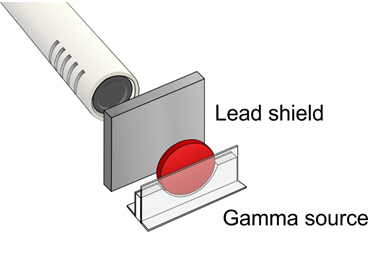
Record Your Results:
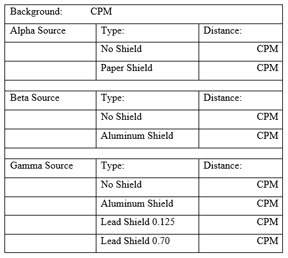
What conclusions can you draw about the penetrating power of radiation?
If you were supplied with a radioactive sample, could you determine the percentages of alpha, beta and gamma radiation being emitted from the source?
Test Results
